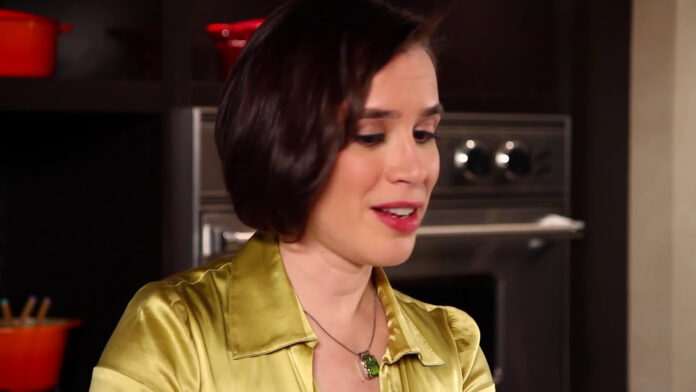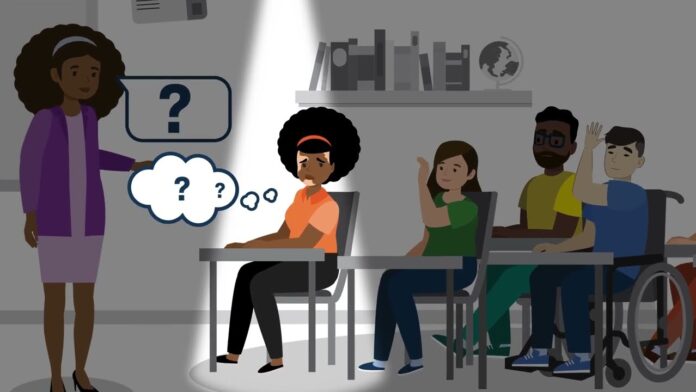Food photography has become an essential skill for anyone interested in capturing the beauty and allure of culinary creations. Whether you’re a professional food stylist, a food blogger, or simply someone who loves to share their meals on social media, mastering the art of food photography can make a significant difference in the way your dishes are perceived and appreciated.
In this comprehensive guide, we’ll explore the various aspects of food photography, from the essential equipment you’ll need to the latest trends and techniques that will help you create stunning, Instagram-worthy images.
Introduction to Food Photography
Food photography is a specialized genre that requires a unique set of skills and techniques. Unlike traditional portrait or landscape photography, food photography involves capturing the essence of a dish, highlighting its textures, colors, and overall appeal. It’s not just about taking a picture of a plate of food; it’s about telling a story, evoking emotion, and making the viewer’s mouth water.
The Importance of Food Photography
In today’s digital age, where social media and online platforms play a significant role in the way we consume and share information, the importance of food photography cannot be overstated. High-quality, visually appealing food images can make a huge impact on the way people perceive and interact with the culinary world. From restaurant marketing to food blogging, effective food photography can be the difference between a dish that goes unnoticed and one that becomes a viral sensation.
Understanding the Fundamentals
Before diving into the more advanced techniques of food photography, it’s essential to understand the basic principles that govern this art form. This includes a solid grasp of concepts like lighting, composition, and styling, as well as a basic understanding of camera settings and equipment.
Equipment Needed

Capturing stunning food photographs requires the right equipment, and the good news is that you don’t need to break the bank to get started. While professional-grade gear can certainly enhance your results, there are plenty of affordable options that can produce excellent results.
Cameras
When it comes to cameras, you have a wide range of options, from DSLR and mirrorless cameras to high-quality smartphone cameras. The choice will depend on your budget and the level of control you want over the image-making process.
| Camera Type | Pros | Cons |
|---|---|---|
| DSLR | – Offers advanced manual controls- Interchangeable lenses- Produces high-quality images | – Can be more expensive- Larger and heavier |
| Mirrorless | – Compact and lightweight- Offers advanced manual controls- Produces high-quality images | – Fewer lens options compared to DSLR |
| Smartphone | – Convenient and always on hand- Improving image quality with each generation- Easy to share on social media | – Limited manual controls- Smaller sensor size |
Lenses
The type of lens you choose can have a significant impact on the look and feel of your food photographs. Consider the following lens options:
- Macro lenses: Ideal for capturing close-up details and textures
- Prime lenses: Offer a fixed focal length and can create a beautiful, shallow depth of field
- Zoom lenses: Provide flexibility in framing and composition
Lighting Equipment
Proper lighting is crucial in food photography, and you have several options to choose from:
- Natural light: Harness the power of sunlight through windows or by shooting outdoors
- Artificial light: Use studio lighting, reflectors, or even household lamps to create the perfect illumination
Other Accessories
In addition to your camera and lenses, there are a few other accessories that can enhance your food photography setup:
- Tripod: Ensures steady, blur-free shots, especially in low-light conditions
- Reflectors: Help bounce light and create desired highlights and shadows
- Diffusers: Soften and spread out light for a more even, flattering illumination
- Backdrops and props: Allow you to create unique, visually appealing compositions
Lighting Techniques

Lighting is the foundation of any successful food photograph. The way you use and manipulate light can make or break your images, so it’s crucial to understand the various lighting techniques and how to apply them effectively.
Natural Light
Utilizing natural light is often the most cost-effective and accessible option for food photographers. However, it’s essential to understand how to work with the changing conditions of natural light to achieve the desired results.
- Understanding the direction and quality of natural light
- Positioning your subject to take advantage of the light
- Using reflectors and diffusers to control the light
Artificial Light
When natural light is not available or sufficient, artificial lighting can be a powerful tool in your food photography arsenal. This includes studio lighting setups, as well as household lamps and other light sources.
- Setting up and positioning studio lighting
- Balancing artificial light with natural light
- Experimenting with different light sources and modifiers
Lighting Ratios and Contrast
The ratio and contrast of the light in your food photographs can have a significant impact on the mood and overall aesthetic of the image.
- Adjusting the ratio of key to fill light
- Creating high-contrast or low-contrast lighting scenarios
- Utilizing backlighting and sidelighting techniques
Color Temperature and White Balance
Understanding the color temperature of your light sources and properly managing the white balance in your camera can help ensure accurate color representation in your food photos.
- Recognizing and adjusting for different color temperatures
- Setting the correct white balance in-camera or through post-processing
Styling Tips
Food styling is an art form in itself, and it can make a significant difference in the way your food photographs are perceived. By carefully arranging and presenting your dishes, you can create visually appealing images that capture the essence of the culinary creation.
Plate Selection and Presentation
The plate or surface you choose to present your food on can have a major impact on the overall look and feel of the photograph.
- Choosing the right plate or surface color and texture
- Arranging the food in a visually appealing manner
- Considering the use of props and garnishes
Prop Selection and Placement
Incorporating the right props can help set the scene and add depth and interest to your food photographs.
- Selecting complementary props that enhance the dish
- Strategically placing props to create a cohesive composition
- Experimenting with different prop combinations
Food Preparation and Handling
The way you prepare and handle the food can greatly influence the final appearance of your photographs.
- Ensuring the food is fresh and visually appealing
- Employing techniques to make the food look its best
- Handling the food with care to avoid damage or distortion
Storytelling and Mood
By considering the overall mood and narrative you want to convey, you can create food photographs that are not only visually stunning but also emotionally engaging.
- Developing a clear concept or theme for your images
- Incorporating elements that support the desired mood or story
- Paying attention to the smaller details that can enhance the overall impact
Composition and Angles
Composition is a crucial aspect of food photography, as it determines how the viewer’s eye will be drawn to and move through the frame.
Rule of Thirds
The rule of thirds is a well-established compositional guideline that can help you create balanced and visually appealing food photographs.
- Positioning the main subject along the intersecting points
- Considering the placement of secondary elements
- Experimenting with different orientations (landscape vs. portrait)
Framing and Cropping
The way you frame and crop your food photographs can greatly influence the overall impact and focus of the image.
- Identifying the most important elements to include in the frame
- Experimenting with different crop ratios and aspect ratios
- Considering the use of negative space
Shooting Angles and Perspectives
The angle from which you shoot your food photographs can significantly impact the way the dish is perceived.
- Exploring different shooting angles (overhead, eye-level, low angle)
- Considering the perspective of the viewer
- Utilizing creative camera angles to enhance the visual interest
Depth of Field and Focus
Controlling the depth of field and focus in your food photographs can help draw the viewer’s attention to the most important elements of the dish.
- Understanding the relationship between aperture and depth of field
- Selective focusing to highlight specific aspects of the dish
- Experimenting with different focal lengths and their effects
Editing and Post-Processing
Even the most beautifully captured food photographs can benefit from some level of post-processing. Editing and refining your images can help enhance their visual impact and better convey the desired mood or message.
Color Correction and Adjustments
Adjusting the color balance, contrast, and saturation of your images can help ensure accurate representation and visual appeal.
- Correcting color casts and white balance issues
- Enhancing the vibrancy and contrast of the food
- Selectively adjusting specific areas of the image
Composition and Cropping
Post-processing can also be used to fine-tune the composition and framing of your food photographs.
- Cropping and resizing the image to improve the overall balance
- Straightening and aligning elements within the frame
- Removing distracting elements or backgrounds
Retouching and Cleanup
Subtle retouching and cleanup can help polish your food photographs and remove any unwanted blemishes or imperfections.
- Removing dust, lint, or other small distractions
- Smoothing out textures or surfaces as needed
- Enhancing the presentation of the food
Advanced Editing Techniques
For those looking to push the boundaries of their food photography, there are a variety of advanced editing techniques that can be explored.
- Compositing multiple images
- Implementing creative color grading and stylization
- Experimenting with digital manipulation and special effects
Food Photography Trends
The world of food photography is constantly evolving, with new trends and techniques emerging all the time. Understanding and staying up-to-date with the latest trends can help you create visually compelling and on-trend images.
Minimalist and Negative Space
The use of negative space and minimalist compositions has become increasingly popular in food photography, creating a clean and elegant aesthetic.
- Emphasizing the key elements of the dish
- Incorporating ample negative space to create a sense of simplicity
- Experimenting with different textures and backgrounds
Moody and Atmospheric Lighting
Dramatic, moody lighting has become a hallmark of many food photographs, creating a sense of atmosphere and emotion.
- Utilizing backlighting and sidelighting techniques
- Embracing high-contrast and low-key lighting
- Experimenting with shadows and highlights
Lifestyle and Storytelling
The integration of lifestyle elements and storytelling has become a prominent trend in food photography, moving beyond just the dish itself.
- Incorporating people, settings, and everyday objects
- Creating a narrative or scene that evokes emotion and engagement
- Considering the overall context and setting of the photograph
Food Flatlay and Overhead Compositions
The flatlay, or overhead, composition has become a popular and visually appealing technique in food photography.
- Arranging the elements of the dish in a visually interesting layout
- Incorporating complementary props and styling elements
- Experimenting with different angles and perspectives
Vibrant and Colorful Aesthetics
The rise of social media platforms like Instagram has led to a growing demand for visually striking, vibrant, and colorful food photographs.
- Emphasizing the natural colors and textures of the food
- Incorporating bold, eye-catching elements and props
- Considering color theory and complementary palettes
Tips for Beginners
If you’re just starting out in the world of food photography, the following tips can help you get off to a strong start:
- Practice, Practice, Practice: The more you shoot, the more comfortable and confident you’ll become. Experiment with different techniques and don’t be afraid to make mistakes.
- Learn the Basics: Familiarize yourself with the fundamental principles of photography, such as aperture, shutter speed, and ISO. Understanding these core concepts will help you take more control over your images.
- Invest in Lighting: Proper lighting is crucial in food photography, so consider investing in a basic lighting setup, even if it’s just a few lamps and reflectors.
- Develop Your Styling Skills: Spend time learning about food styling and prop selection. This can make a significant difference in the overall look and appeal of your photographs.
- Pay Attention to Composition: Experiment with different framing, angles, and the rule of thirds to create visually engaging compositions.
- Embrace Post-Processing: Don’t be afraid to edit your images. Mastering basic photo editing skills can help you take your food photographs to the next level.
- Study the Work of Others: Analyze the food photographs you admire and try to understand the techniques and approaches used by experienced photographers.
- Stay Inspired: Follow food photography accounts, attend workshops, and continue to seek out new sources of inspiration to keep your creativity fresh.
- Shoot Consistently: Consistency is key in building a strong portfolio and developing your unique style.
- Seek Feedback and Learn: Share your work with others and be open to constructive criticism. This can help you identify areas for improvement and grow as a food photographer.
Resources for Further Learning
If you’re interested in delving deeper into the world of food photography, here are some recommended resources to help you continue your journey:
- Books:
- “Food Photography: From Snapshots to Great Shots” by Nicole S. Young
- “The Food Stylist’s Handbook” by Denise Vivaldo
- “Plate to Pixel: Digital Food Photography & Styling” by Helene Dujardin
- Online Courses:
- Skillshare: “Food Photography: How to Shoot Mouthwatering Images” by Andrew Scrivani
- Udemy: “Food Photography Masterclass” by Phil Ebiner
- Websites and Blogs:
- FoodPhotographyBlog.com
- FoodStylingAndPhotography.com
- SaltyCanary.com
- YouTube Channels:
- Phlearn
- Mango Street
- Tastemade
- Workshops and Meetups:
- Local photography or food-focused meetup groups
- Food photography workshops and seminars
Conclusion
Food photography is a captivating and constantly evolving art form that requires a unique blend of technical skills, creative vision, and a deep appreciation for the culinary arts. By mastering the techniques and trends covered in this ultimate guide, you’ll be well on your way to creating stunning, Instagram-worthy food photographs that capture the essence of your culinary creations.
Remember, the journey of food photography is one of continuous learning and experimentation. Keep practicing, stay inspired, and don’t be afraid to step out of your comfort zone. With dedication and a keen eye, you can elevate your food photography to new heights and share your passion for the culinary world with the world.









